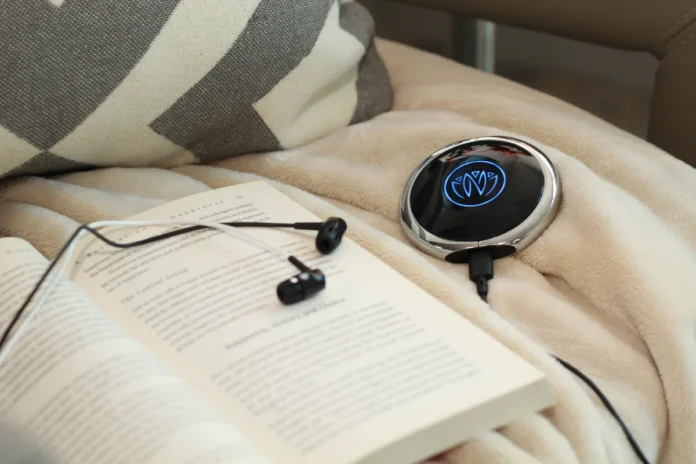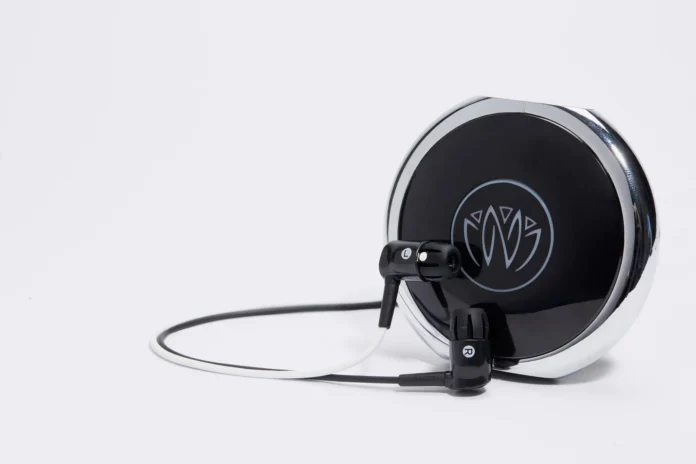With many people beginning to explore vagus nerve stimulation at home, it is helpful to understand what vagus nerve stimulation is and how it can be done. Vagus nerve stimulation (VNS) is a therapy that involves stimulating the vagus nerve through electrical pulses sent from a device implanted in your chest or a non-invasive device, such as vagus nerve stimulating headphones that work through the ear, like Xen by Neuvana. There are also certain exercises or practices that don’t involve any equipment that can help you get a similar effect. That way, you can reap the rewards of vagus nerve stimulation at home, rather than relying on invasive procedures to get the job done.
Non-Invasive Vagus Nerve Stimulation At Home

When vagus nerve stimulation is done at home with a non-invasive device, it typically involves a series of sessions in which the user listens to audio designed to stimulate the vagus nerve. As a result, users often report feelings of calm, better sleep, a brighter mood, and faster recovery. Some even report feeling immediate pain relief or improved mental clarity.
To ensure safety and efficacy of vagus nerve stimulation at home, it is important to follow the instructions provided by the vagus nerve stimulating device manufacturer. In addition, consulting with a doctor or specialist before beginning vagus nerve stimulation is recommended, especially for those suffering from medical conditions that could be affected by vagal stimulation. With proper guidance, vagus nerve stimulation at home can be a safe and effective way to reduce symptoms associated with anxiety, depression, migraines and chronic pain.
Other Ways to Stimulate the Vagus Nerve At Home
A non-invasive vagus nerve stimulation device is an excellent option for experiencing VNS from home. However, it isn’t the only easy, non-invasive way to do so. So next, let’s explore some other vagus nerve stimulation exercises in detail.

Gentle exercises
Gentle exercises such as yoga, tai chi, and qigong can help stimulate the vagus nerve. These activities involve slow and deep breathing — which helps activate the vagus nerve — as well as mindful movements that reduce stress levels and activate vagal tone.
The slow, rhythmic breathing these exercises require can activate the vagus nerve and help improve vagal tone. Likewise, deep, slow breathing with long exhales stimulates the vagus nerve and helps reduce stress levels as well.
Cold water immersion
Immersing yourself in cold water is another excellent way to stimulate the vagus nerve, as it activates your body’s thermoregulatory system. The vagus nerve connects your brain to organs such as your heart and lungs — when exposed to cold water, this connection helps regulate temperature by activating other parts of the nervous system that control blood pressure, respiration rate, and heart rate.
Humming or singing
The act of humming or singing has been found to be very beneficial for vagal stimulation. Studies have shown that singing or humming aloud can help release endorphins and reduce stress levels while activating the vagus nerve.
In conclusion, vagus nerve stimulation at home is a safe and effective way to reduce symptoms associated with anxiety, depression, migraines, and chronic pain. With proper guidance from a doctor or specialist and understanding of vagal stimulation exercises — such as gentle exercises, cold water immersion, and humming/singing — people can experience positive results from vagus nerve stimulation at home.
Benefits of Vagus Nerve Stimulation
Next, let’s move on to discussing the many benefits of vagus nerve stimulation.

Reduced and depression
Numerous studies have been done on the effects of VNS in relation to mental health. The results show that vagus nerve stimulation can effectively reduce symptoms of depression, anxiety, and even PTSD.
For example, on one 2017 study of the effects of VNS on patients who have treatment-resistant depression was particularly promising:
“Results indicate that the adjunctive VNS group had better clinical outcomes than the treatment-as-usual group, including a significantly higher 5-year cumulative response rate (67.6% compared with 40.9%) and a significantly higher remission rate (cumulative first-time remitters, 43.3% compared with 25.7%). A subanalysis demonstrated that among patients with a history of response to ECT, those in the adjunctive VNS group had a significantly higher 5-year cumulative response rate than those in the treatment-as-usual group (71.3% compared with 56.9%). A similar significant response differential was observed among ECT nonresponders (59.6% compared with 34.1%).”
Reduced inflammation
Another exciting benefit of vagus nerve stimulation is its potential to reduce inflammation. VNS is thought to limit inflammation by activating the vagal anti-inflammatory pathway, which increases production of acetylcholine — a neurotransmitter that helps reduce inflammation.
Improved digestion
The vagus nerve is also intimately connected to our digestive system, so it’s no surprise that vagus nerve stimulation can positively affect gut health. Studies show vagal tone can improve digestion by increasing gastric motility (the process of food moving through your GI tract). Additionally, VNS has been shown to help reduce symptoms associated with irritable bowel syndrome (IBS).
Improved heart health
Vagus nerve stimulation can also help improve heart health by reducing stress and improving vagal tone. This is especially true in people with tachycardia (abnormally fast heart rate) and arrhythmia (irregular heartbeat). Studies have shown vagus nerve stimulation can help regulate heart rate and reduce symptoms associated with these conditions in some circumstances.
Reduced pain
Lastly, vagus nerve stimulation effectively reduces chronic pain symptoms such as migraines, fibromyalgia, rheumatoid arthritis, and peripheral neuropathy. It does this by sending signals to the brain that help reduce inflammation and thus, pain.
Conclusion
Vagus nerve stimulation at home can be a safe and effective way to reduce symptoms associated with anxiety, depression, migraines, chronic pain, inflammation, and digestive issues. Look into all of your options for stimulating this very special nerve, including a transcutaneous vagus nerve stimulation device like Xen by Neuvana or trying gentle exercises to stimulate the vagus nerve and see what kind of benefits come with it!








